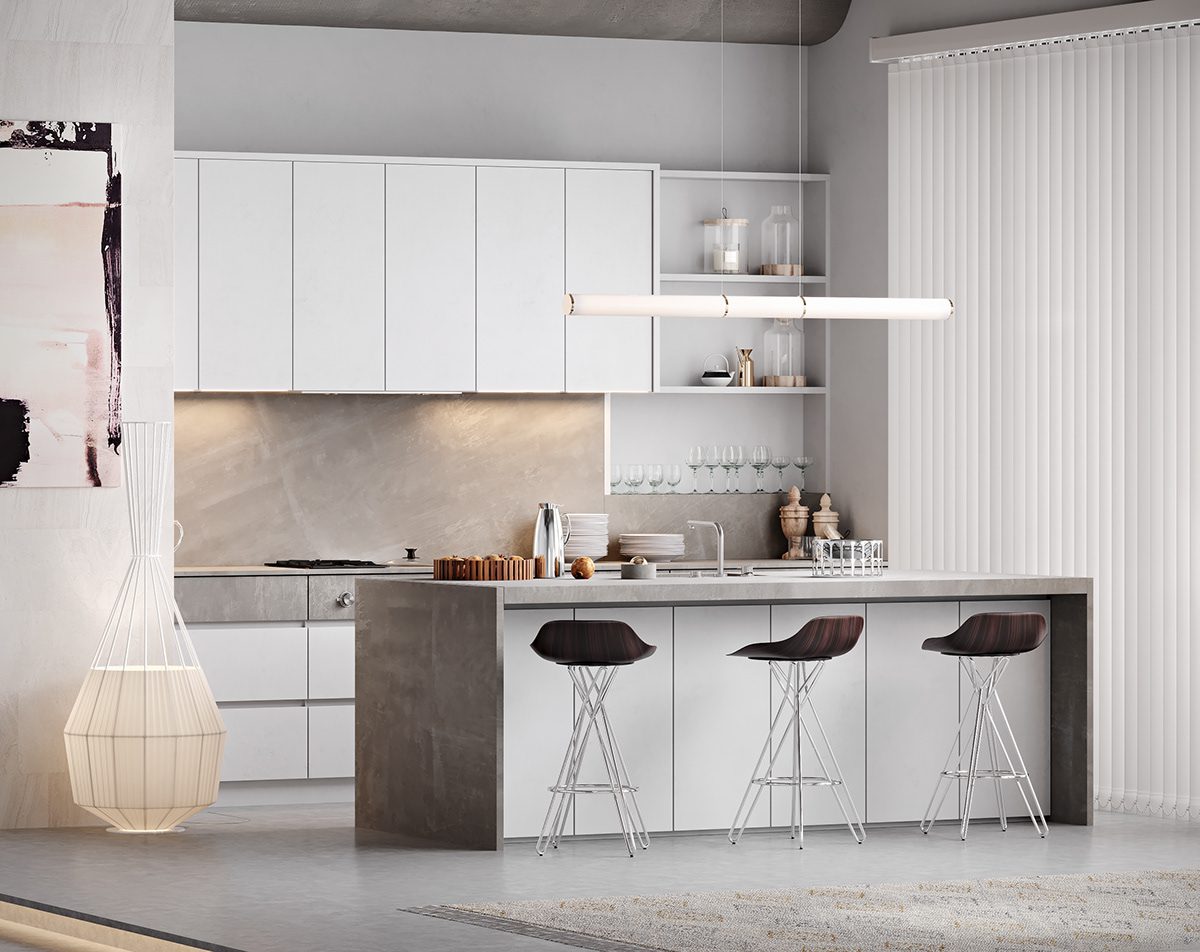Furniture 3D Visualization
3D furniture visualization is the process of creating visual representations of furnishings using computer software. It involves modeling possessions in a three-dimensional environment, applying materials and textures, adjusting lighting, and generating final images or animations. This technique is utilized by designers, manufacturers, and retailers to showcase furnishings designs, demonstrate finishes and configurations, and create captivating marketing visuals. 3D furniture design rendering provides a realistic depiction of how household goods will appear in real life, assisting in the illustration, presentation, and sales processes.
WORKFLOW OF FURNITURE 3D RENDERING SERVICES
The workflow for 3D furniture visualization typically involves the following steps:
- Requirements gathering: Understanding the client’s needs, plan criteria, and desired outcomes for the photorealistic 3D furniture.
- 3D modeling: Creating an accurate 3D model of the furnishings using specialized software, ensuring it accurately represents the shape, proportions, and characteristics of the furniture.
- Material application: Applying appropriate materials and textures to the 3D model to achieve the desired look, including surfaces, colors, patterns, and realistic textures.
- Lighting configuration: Adjusting lighting sources to create realistic lighting and shadows, enhancing the visual appeal and realism of the furnishings visualization.
- Camera placement and composition: Position the virtual camera at optimal angles and perspectives to capture the house fittings, considering composition principles for visually appealing and balanced illustrations.
- Rendering: Processing the 3D model, materials, lighting, and camera settings using software to generate high-quality images or animations, simulating lighting interactions for realistic results.
- Post-processing: Enhancing the images or animations through post-processing techniques, adjusting colors, contrast, and sharpness, and adding special effects if needed.
- Customer review and feedback: Sharing the created visualizations with the client for evaluation and feedback, incorporating any necessary changes or improvements based on the client’s input.
- Final delivery: Providing the finalized furnishings visualizations to the customer in the desired format, such as high-resolution images or video files, for their marketing, presentations, or other purposes.
ADVANTAGES OF 3D FURNITURE RENDERING in Finval Studio
There are several advantages of cgi furniture in Finval Studio:
- Realistic visualization: 3D furniture rendering provides highly realistic visualizations of household equipment designs. It allows customers to see how the furnishings will look in a lifelike setting with accurate materials, textures, and lighting.
- Plan exploration: with 3D visualization, clients can explore different design options and variations for their furnishings. They can visualize various finishes, colors, and configurations before making final decisions, saving time and resources.
- Customization and personalization: 3D rendering enables customization and personalization of furniture designs. Clients can request modifications, such as changing materials, adjusting dimensions, or adding unique features, to meet their specific preferences.
- Marketing and presentation: 3D renderings are excellent marketing and presentation tools. They help showcase furnishings illustrations in a visually compelling manner, attracting potential customers and conveying the design intent effectively.
- Cost and time efficiency: 3D visualization minimizes the need for physical prototyping and photography, saving costs and time associated with these traditional processes. Changes can be made easily and quickly in the virtual environment, reducing production iterations.
- Client communication and approval: 3D renderings facilitate clear communication and collaboration between designers and clients. Clients can provide feedback and request modifications based on the rendered visuals, ensuring their expectations are met before the manufacturing process begins.
- Competitive edge: incorporating 3D household goods illustrations in the design process gives businesses a competitive edge. It allows them to present innovative, visually appealing, and customizable furnishings plans to attract customers and stay ahead of the market.
How much does 3D rendering cost?
The cost of 3D rendering can vary significantly based on factors such as project complexity, level of detail required, number of illustrations needed, software and tools used, the expertise of the rendering artist or studio, and project timeline.
Basic 3D furniture rendering services can range from a few hundred dollars to several thousand dollars per image. More complex and high-quality renderings may cost several thousand dollars or more per image. Additional charges may apply for animated renderings or virtual tours.
For accurate pricing estimates, it is recommended to consult with visualization service providers and provide them with project specifications. They can consider your specific requirements and provide a customized quote based on the scope of work.








